From the days of the sword through the advent of the guillotine, Charles-Henri Sanson killed some 3,000 people during his bloody career.
On January 5, 1757, King Louis XV of France departed the Palace of Versailles. While he was walking toward his carriage, a strange man suddenly shoved past the palace guards, striking the king in the chest with a penknife.
The assailant was arrested and the king was ushered inside, bleeding from what turned out to be a minor chest wound. No longer fearing for his life, King Louis’ concern shifted from his own bodily injury to the kind that could be inflicted on the attempted assassin.
On March 28, Robert-François Damiens, the mentally unstable religious fanatic turned failed king slayer, was led out to the Place de Grève before Paris’ Hotel De Ville and submitted to a brutal gauntlet of ritual torture before a cheering crowd.
His flesh was torn away with hot iron pincers. The knife with which he had stabbed the king was fused to his hand with molten sulfur. Then, the executioner chained each of Damiens’ limbs to a different horse and sent them running in different directions. Two hours later, when Damiens’ joints still hadn’t snapped, the executioner pulled out a sword and dismembered Damiens himself before setting fire to the man’s still-living torso, reducing the failed assassin to ashes.
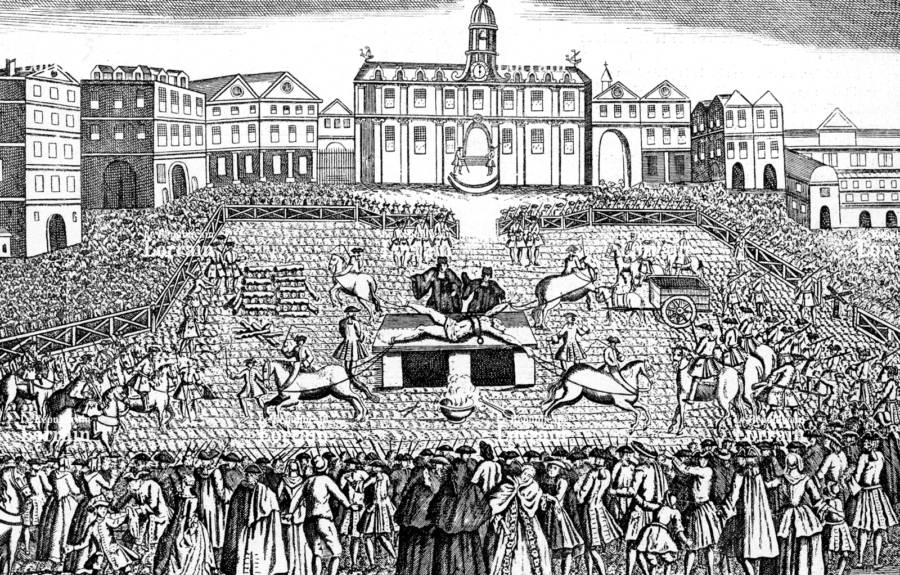
Wikimedia CommonsThe execution of Robert-François Damiens.
By all accounts, including that of Giacomo Casanova (who happened to be passing through Paris at the time), the French onlookers loved the spectacle. And for the 17-year-old executioner who performed the punishment, Charles-Henri Sanson, it was just another day on the job.
Charles-Henri Sanson And The Bloody Code
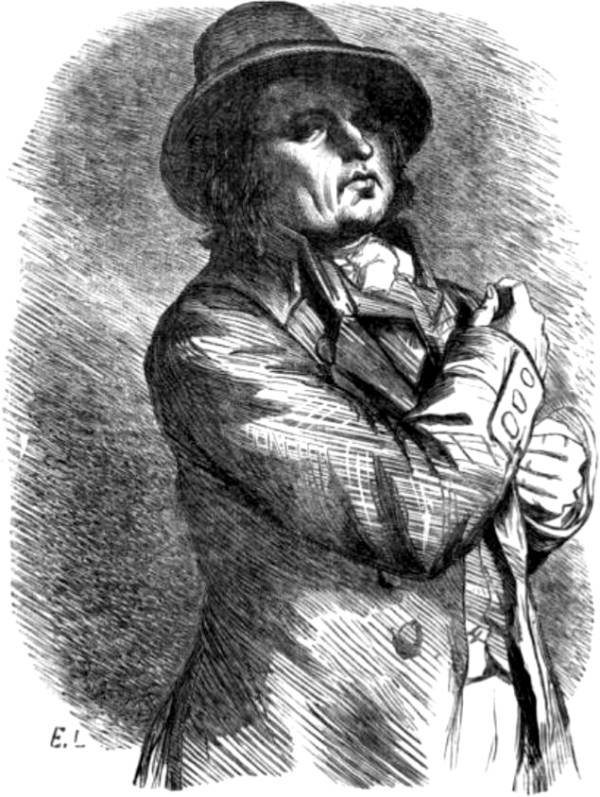
Wikimedia CommonsCharles-Henri Sanson
By the time Charles-Henri Sanson was born in Paris on Feb. 15, 1739, the Sanson family had been the royal executioners of France for three generations. At a time when one’s career was less a matter of choice than one of inheritance, he and his ancestors had drawn the short straw.
Sanson’s teenaged tenure as the executioner of Paris began in 1754 when his father, Charles Jean-Baptiste Sanson, suddenly fell victim to a mysterious disease, leaving him paralyzed on one side for the rest of his life. Charles Jean-Baptiste quickly retired to the country, leaving a young Charles-Henri to work out the ropes of his profession, tangled and brutal as they were (though he would not formally receive the office until his father’s death 1778).
For several centuries, the French justice system had had its own cultural hierarchy.
Nobles who committed serious crimes were beheaded, usually with a sword, as that was a cleaner and more effective cut than an axe. Commoners would be hung, a process that involved more mathematics than one might expect (finding the correct rope length to effectively break the human neck requires fairly complex calculations). Highwaymen, other bandits, and those who had committed very egregious crimes against the socio-political order were “broken on the wheel”: stretched out over the spokes of a cartwheel and their limbs smashed with a sledgehammer before they were either killed with a blow to the chest (the coup de grace, or “cut of grace”) or left to die from exposure — in some cases eaten alive by birds.
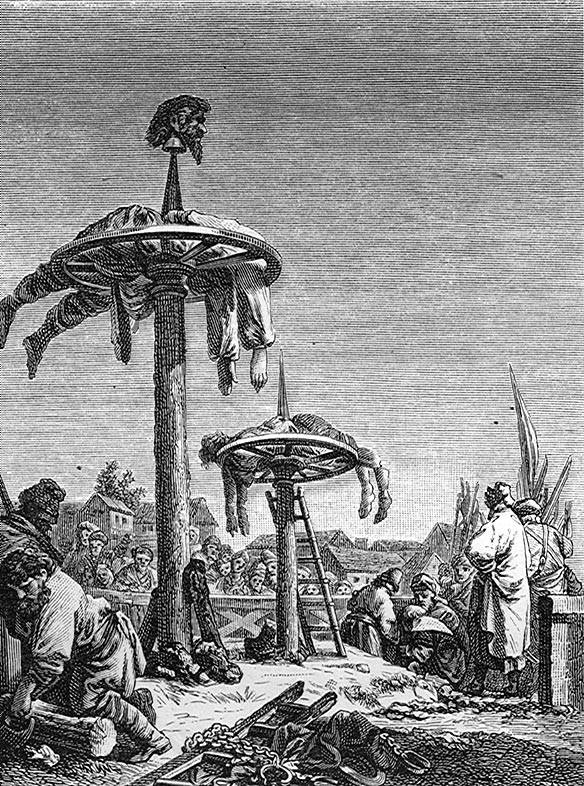
Wikimedia CommonsThe breaking wheel
To be an effective executioner or “executor of high works,” as Charles-Henri Sanson was officially titled, meant being versed in every technical aspect of these procedures as well as their symbolic and theatrical elements. The “Monsieur de Paris” was required to appear in public engagements wearing a red cloak of office that marked him as separate from other men. After executions, it was not uncommon for sick members of the population to come forward to touch the executioner’s hand in pursuit of its supposed healing powers (all the better if it was still bloody).
Despite the more “dignified” aspects of the position, the common people feared executioners more than they respected them. Technically minor nobility, the Sansons were entitled to a tenth of the goods at their local market but could not receive this “tax” by hand, lest they spread their contamination. At church, they were given their own pew, and it was not uncommon for people to spit as the executioner walked by (though perhaps more out of superstition than disgust).
Although they were a vital part of the social order within which they existed, the Sansons and others like them were pariahs who seemed in some ways a world apart.
This was the reality into which Charles-Henri Sanson was born. It was not, however, the world in which he would die.
Rumors Of Revolution And The Coming Of The Guillotine
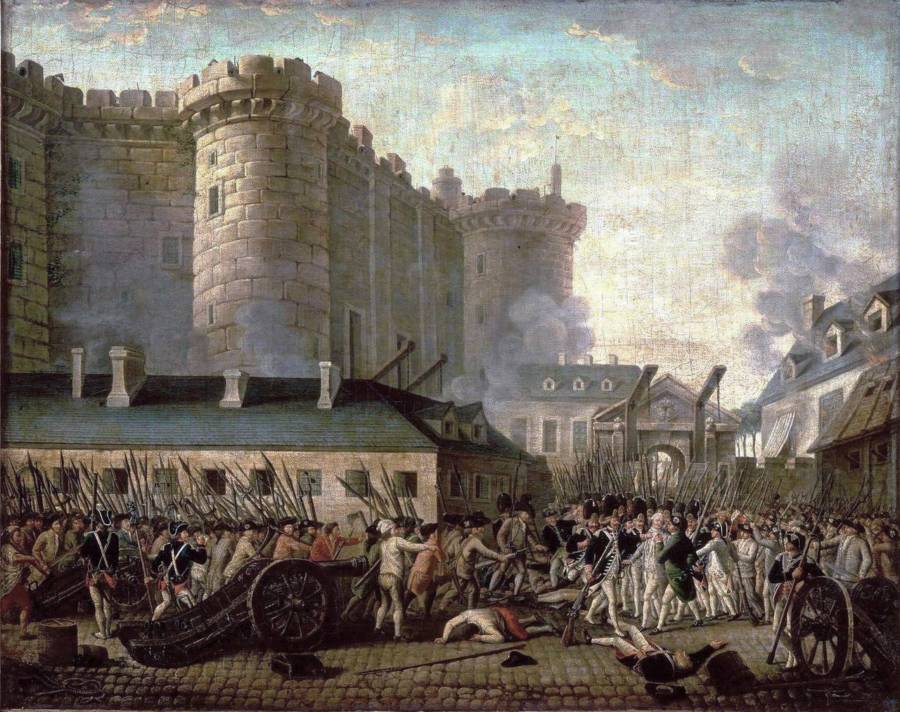
Wikimedia CommonsThe storming of Paris’ Bastille prison at the outset of the French Revolution.
The first sign of the changing times came in 1788 when Charles-Henri Sanson and his sons, Henri and Gabriel, were called to handle the execution of Jean Louschart in the village of Versailles. Convicted of killing his father with a hammer in the midst of a heated argument, Louschart was to be publicly broken on the wheel not far from the Palace of Versailles. Or, at least, he was supposed to be.
The execution was cut short before it could come to fruition when a group of sympathetic villagers stormed the stage, kidnapped the prisoner, and burned the wheel upon the scaffold.
Although the Sansons escaped the fury of the mob, the system they upheld did not. With the parliamentary body known as the National Constituent Assembly already discussing changes to the country’s system of government amid the early stages of what would become the French Revolution, the events at Versailles brought the state of public execution and executioners up for debate as well.
In 1789, after outlawing the privileges and prejudices given to executioners, the government proposed a single means of execution for all people — beheading — bringing Enlightenment ideals about the equality of the social classes to their logical conclusion. But, while the idea was (at least comparatively) merciful, its implementation held problems which only Charles-Henri Sanson seemed to see.
He knew from experience that a clean beheading, even with a sword, was no easy task. To his lasting shame, he had once unintentionally tortured a condemned former friend of his father’s, the Comte de Lally, by failing to sever his head in a single stroke.
Skeptical that executioners across the country would be able to consistently carry out the punishment, Sanson became an early supporter of Dr. Joseph-Ignace Guillotin’s proposed decapitation machine. He was also instrumental in its testing and development.
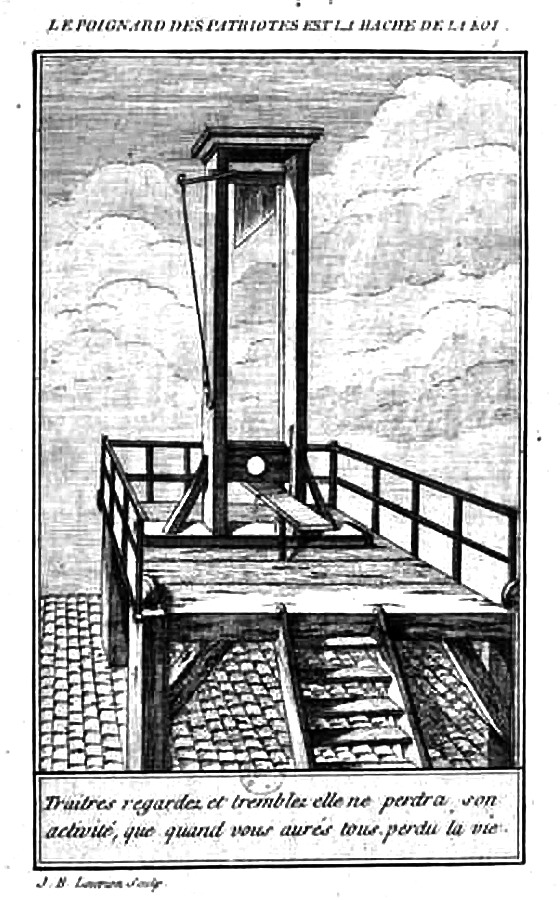
Wikimedia CommonsThe guillotine
For months, Sanson, Guillotin, and the Royal Surgeon, Dr. Anton Louis, labored on the design and mechanics of the machine. Supposedly, Sanson’s friend and musical collaborator, the German harpsichord maker Tobias Schmidt, finalized the machine’s body and assembled the final version. Another apocryphal story has Dr. Louis, Guillotin, and Sanson meeting King Louis XVI (then under house arrest) to gain the monarch’s support.
Mechanically-minded and fond of building his own locks, the king approved the device but recommended changing the shape of the blade from a flat, cleaver design to a sloping edge to better distribute the weight. Finally, after practice runs with bales of hay, pigs, sheep, and human corpses, the “guillotine,” as the machine came to be known, was ready for its debut.
On April 25, 1792, the guillotine claimed its first victim: Nicolas-Jacques Pelletier, a highwayman who is reported to have been horrified by the strange new device.
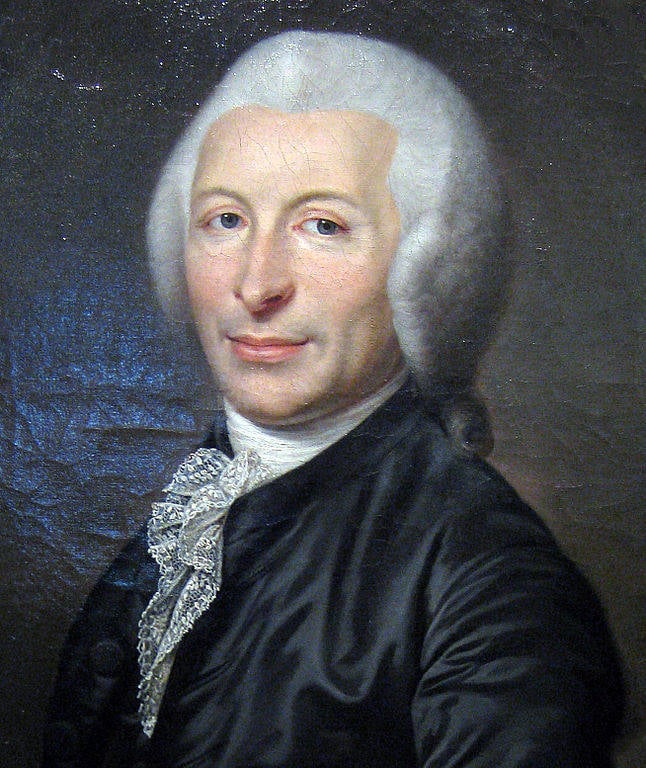
Wikimedia CommonsJoseph-Ignace Guillotin
Although onlookers had gathered at the Place de Grève, as always, to see the spectacle, they were not pleased by the speed and efficiency the machine brought to the process. The crowd quickly turned into a riotous mob shouting, “Bring back our wooden gallows!” They clashed with the newly formed National Guard, resulting in the deaths of three civilians.
In fairness, there were things to dislike about the guillotine. Following the execution of Charlotte Corday, the assassin who killed revolutionary leader Jean-Paul Marat, it was noted that her severed head changed expression when slapped by one of Sanson’s assistants. From then on, the executioners suspected what would only be confirmed by scientists in the 20th century: the guillotine cuts so quickly that the head remains alive — and potentially conscious — for several seconds after its removal.
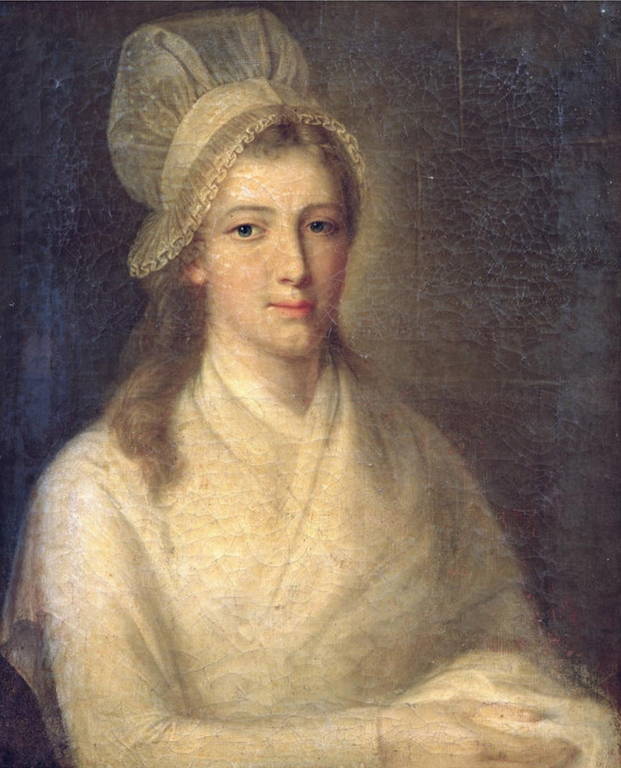
Wikimedia CommonsCharlotte Corday
Charles-Henri Sanson’s own souring sentiments about the device, however, were more personal. On Aug. 27, 1792, shortly after the collapse of the monarchy, his son Gabriel fell to his death from the scaffold while displaying a severed head. A few weeks later, plagued by guilt and disturbed by the recent September Massacres of more than 1,000 prisoners who radical revolutionaries feared might aid royalist forces in a counterrevolution, Sanson offered up his resignation to the new authorities. But he was refused.
And the next January, both the guillotine and Charles-Henri Sanson were immortalized by their “crowning achievement”: the execution of Louis XVI.
The Death Of The King
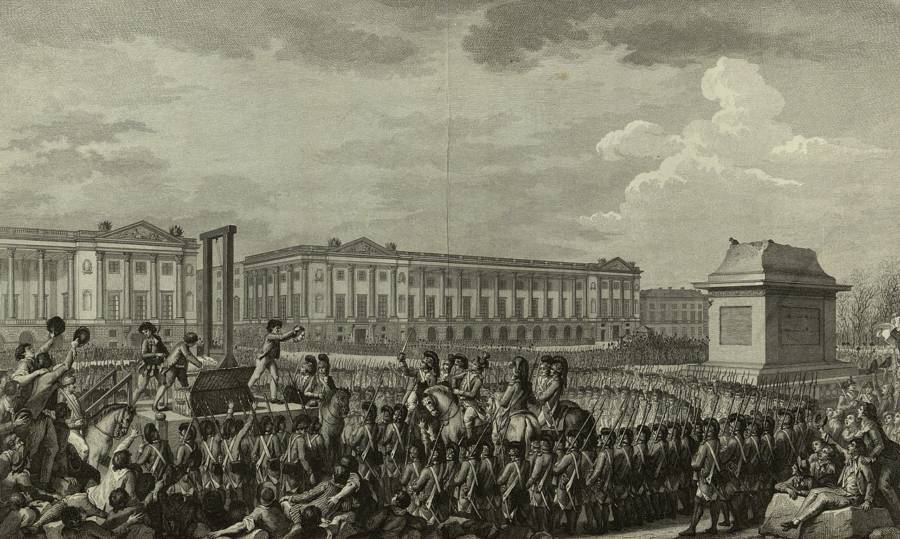
Wikimedia CommonsThe execution of Louis XVI.
Ever since the abolishment of the monarchy and the royal family’s failed attempt to escape France, the fate of the deposed king had been in question.
Not the most political of men — his meager free-time spent mostly reading, gardening, and playing his violin — Charles-Henri Sanson considered himself, at heart, a royalist. Louis XVI was the monarch who had officially given him his office. Sanson was, in a manner of speaking, the King’s justice. Without the backing of royal authority, the reasoning went, was he really any better than the murderers he was tasked with dispatching?
According to the memoir of Charles-Henri Sanson’s grandson, the night before the Jan. 21, 1793 execution of Louis XVI was scheduled, a threatening message was delivered to the Sanson household explaining that a plot to save the king was in place. If this account is to be believed, the executioner went to the scaffold at the Place de la Révolution (today’s Place de la Concorde) with “swords, daggers, four pistols, and a flask of power, and… pockets full of bullets” ready to help save Louis XVI.
Whether the plot was real or not, the rescue party never manifested.
Instead, Louis XVI was met on the national stage by Charles-Henri Sanson and a drum roll. The charges against the king — that he had plotted against the people of France — were read aloud. The king offered his last words, “You see your king is willing to die for you. May my blood cement your happiness,” and was cut off by the drums. Then, he was laid down on the guillotine’s bed, and Sanson did his duty.
In the crowd, the newly free citizens of France rushed forward to wash themselves with the king’s blood and collect it on handkerchiefs. Although rumors later spread that Sanson sold locks of Louis XVI’s hair, the actual historical record makes that seem unlikely.
“The sacrifice is accomplished,” he wrote in his diary entry about the events. But the people of France did not seem happier.
The Terror
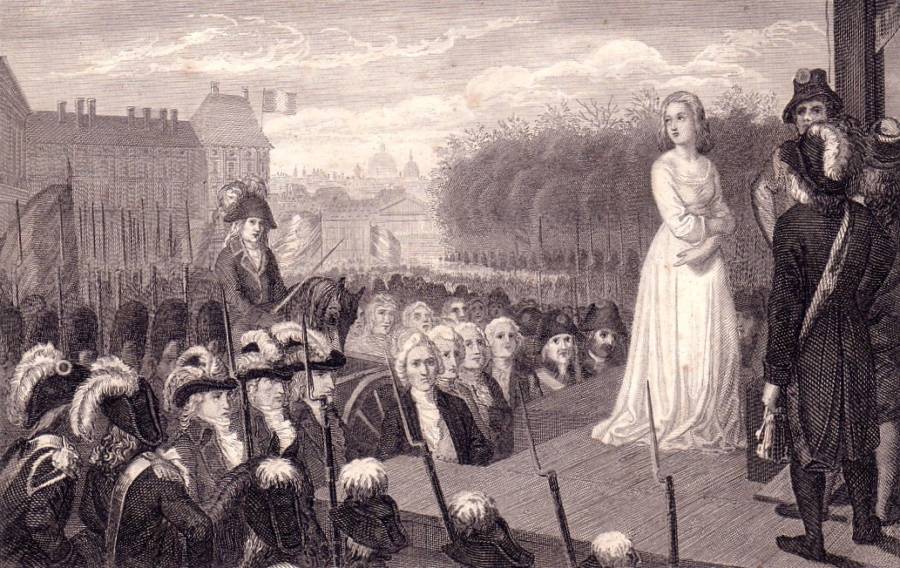
Wikimedia CommonsThe execution of Marie-Antoinette
Under the new revolutionary government of Georges Danton and Maximilien Robespierre, paranoia about internal “enemies of the people” led to a streamlined justice system and an ever-growing number of executions in 1793 and 1794. Termed “The Terror” by its architects, it was, Robespierre claimed, “nothing but justice, prompt, severe, inflexible.”
But it also meant that Charles-Henri Sanson was busier than he had ever been in his life. Following the execution of Marie-Antoinette, the dethroned queen of France, the number of executions per day grew from three or four to tens and dozens, in some cases more than 60 beheadings in a day. The stench of blood was so bad at the Place de la Concorde that soon farm animals refused to cross it.
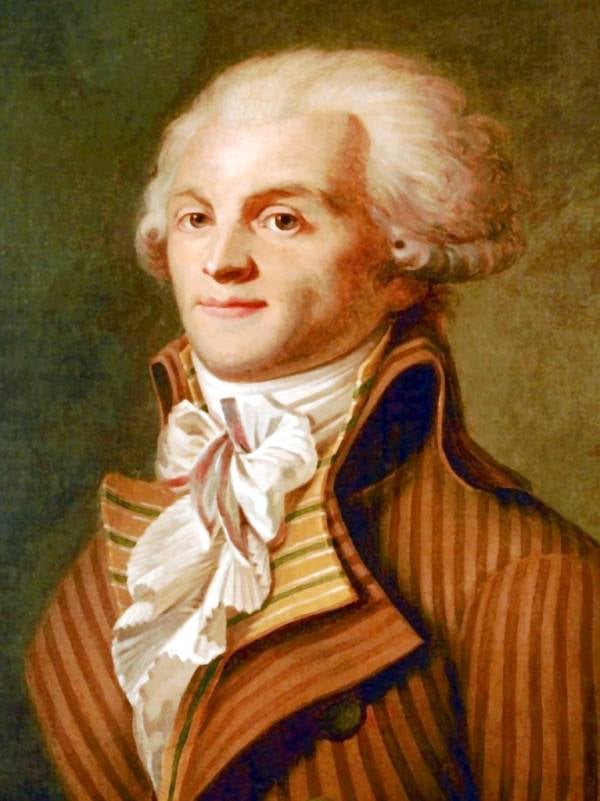
Wikimedia CommonsMaximilien Robespierre
At the same time as the grim realities of the Terror became a facet of everyday life, the already infamous Charles-Henri Sanson suddenly found himself elevated to a new status.
While people had always stopped, stared, and whispered after him before, now he was affectionately greeted as “Charlot!” (“little Charles” or Charlie) on the street. There was talk of officially titling him “The Avenger of the People,” and his style of dress (green suits) became a trend among fashionable revolutionaries.
The guillotine, too, had achieved a popularity never before seen among execution methods (with the exception, of course, of the Christian cross). Children took to killing rats with “toy” guillotines and the device began appearing on buttons, brooches, and necklaces. For a time, guillotine earrings became a minor phenomenon.
Beneath the surface, though, new struggles were stirring. The populist Danton and the idealist demagogue Robespierre had always been partners of convenience brought together by the forces of the revolution. Having already removed the majority of royalists, the remnants of the moderate Girondist party, and several members of their own circle, it was only a matter of time before they turned on each other. Robespierre acted first.
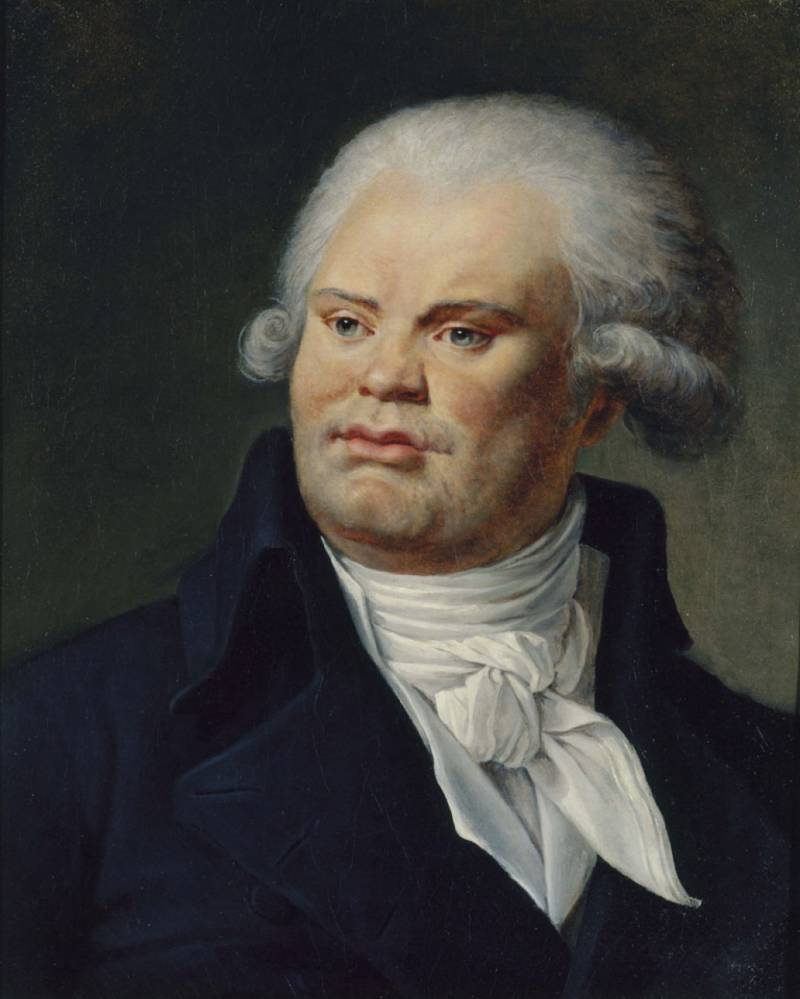
Wikimedia CommonsGeorges Danton
Drumming up anti-Danton fervor among the revolutionary government, Robespierre and his cohorts soon succeeded in having Danton arrested on charges of corruption and conspiracy (mainly stemming from alleged financial impropriety and illicit accumulation of wealth) on March 30, 1794.
Riding in Sanson’s carriage on the way to the scaffold on April 5, Danton is reported to have said, “What annoys me most is that I am going to die six weeks before Robespierre.” He was off, only slightly, with the timing.
The Beginning Of The End
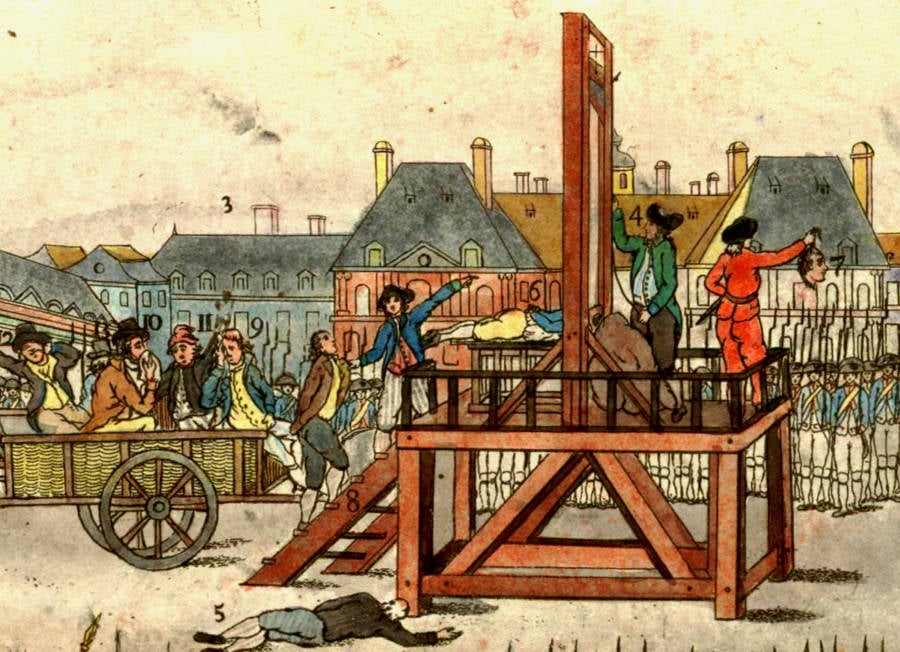
Wikimedia CommonsThe execution of Robespierre
Robespierre’s last hurrah, the Festival of the Supreme Being, took place that June. Having outlawed Catholicism throughout France, he instated a national Deistic religion with himself as high priest.
And Charles-Henri Sanson found himself in a place of honor, with him and his son Henri flanking the guillotine, dubbed “The Holy Guillotine,” on a blue velvet and white lily parade float on the Champs de Mars.
Finally, after nearly 40 years — the longest tenure of any Sanson executioner — Charles-Henri Sanson’s experiences became too much for him. “What I feel is not pity, it must be a derangement of my nerves,” Sanson wrote in his diary, “Perhaps I am punished by the Almighty for my cowardly obedience to mock justice. For some time I have been troubled with terrible visions…. I cannot convince myself of the reality of what is going on.”
He began to experience a persistent fever and see spots of blood on his tablecloth at dinner. Soon afterward, he collapsed in an attack of “delirium tremens” and descended into a “dark moodiness” from which he never recovered. His son took over his duties before being arrested on dubious charges. But before Henri Sanson could be sent to the guillotine, Robespierre himself would meet his end.
A victim of the same speedy justice he had inspired, Robespierre was accused of believing himself to be the messiah and arrested. He attempted to kill himself with a pistol, but missed, breaking his jaw and leaving himself unable to speak in his own defense.
Charles-Henri Sanson recovered enough to attend the final performance. Following the execution of Robespierre on July 28 — noted for the potentially contemptuous way the executioner removed Robespierre’s bandage, leaving the victim screaming before the blade fell — he only continued in the position long enough to allow his son to take over for him.
The Last Laugh?
Not much is known of Charles-Henri Sanson’s retirement. He settled in the country, in the same house his father had, tending his garden and helping to raise his grandson, Henri-Clément, outside of Paris and away from the morbid celebrity status of the Sanson reputation.
Insultingly, Sanson was denied his pension on a technicality, as he did not officially inherit his title until more than 20 years into his service. He died in 1806, prematurely aged, some said, by his experiences of having personally killed nearly 3,000 people.
There is, however, one last story — for which there is no corroboration. Supposedly, early into the reign of Napoleon I, the retired executioner and the Emperor met by accident near the Place de la Concorde, the same place he had killed the last king a decade earlier. Recognizing Charles-Henri Sanson, Napoleon asked if he would do the same to him if it came to it. Apparently displeased by the affirmative answer, Napoleon is said to have asked how he could sleep at night.
To which Sanson is supposed to have said, “If kings, emperors, and dictators can sleep well, why shouldn’t an executioner?”
After this look at Charles-Henri Sanson, discover the story of British hangman Albert Pierrepoint, the executioner who took more than 400 lives. Then, read up on the horrific (and perhaps apocryphal) Viking execution method known as the Blood Eagle.






